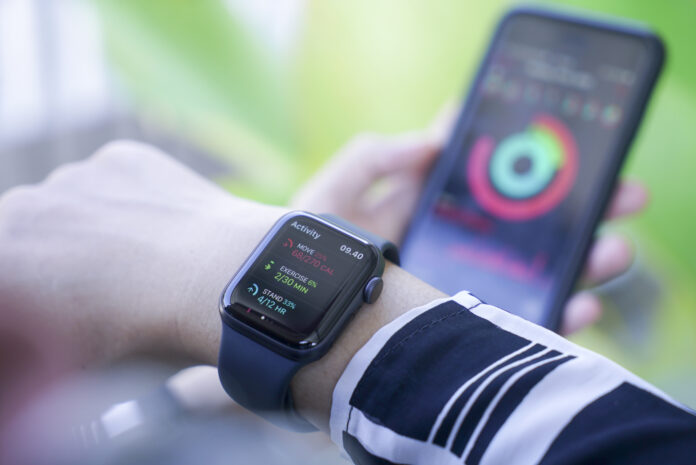In recent years, there have been major innovations in healthcare and digital health (as discussed in one of our previous articles here). Smart health wearables, in particular, have evolved significantly from simple step trackers to advanced devices that offer deep insights into various aspects of our health. These devices have become widely used, including here in Cayman. Below, we explore the most common types of wearable health devices, the benefits they provide, and how they can contribute to better health and well-being.
Fitness Trackers
Fitness trackers are wearable devices that monitor physical activity and help users keep track of their fitness levels. They typically record data such as the number of steps taken, calories burned, and distance travelled. Many advanced models also measure heart rate, monitor sleep quality, and provide feedback on activity levels throughout the day.
The benefits of fitness trackers are well-documented, especially when it comes to increasing physical activity. Studies have shown that using fitness trackers can motivate users to walk more and engage in more intense physical activity. Research has also shown these trackers to be useful for weight management, helping individuals set goals, track progress, and stay accountable to their fitness routines.
Smartwatches
Smartwatches are multifunctional devices worn on the wrist that provide more advanced features than fitness trackers.
Many models now offer stress-relief features, such as mindfulness reminders or guided breathing exercises, promoting overall mental well-being. Increasingly, smartwatches are also capable of detecting potential heart problems. Companies such as Apple have a dedicated page on their website explaining how users can track atrial fibrillation (an irregular heartbeat) using the Apple Watch. It is important to note that Apple noted that this feature is for use of individuals who already have an atrial fibrillation diagnosis and are over the age of 22, but it is still showcasing the progress being made in being able to help detect an issue early that otherwise may not have been noticed by the individual and ensure they receive the adequate help.
In the Cayman Islands, cardiovascular disease is the leading cause of death (as it is across the Latin America and Caribbean region). Individuals with atrial fibrillation, high blood pressure or high cholesterol are at greater risk of developing cardiovascular disease, so it is possible that the ability of wearable technology to detect such problems, could potentially support earlier intervention and contribute to reducing the prevalence of this disease in the future.
Sleep Monitors
Sleep monitors are wearables designed specifically to track the quality and quantity of your sleep. These devices often use sensors to detect movements, monitor breathing patterns, and track heart rate variability throughout the night. Some devices are worn on the wrist, while others, like smart rings or under-mattress sensors, can monitor sleep from a more discreet position.
Good sleep is critical for physical and mental health, and sleep monitors can help users identify patterns or behaviours that may be hindering restorative rest. In some cases, these devices can even alert users to early signs of illness or poor health, such as changes in heart rate (similar to smartwatches above) or temperature, before symptoms arise.
Medical-Grade Wearables
Medical-grade wearables are advanced devices that offer clinical-grade monitoring, often focusing on specific health concerns such as blood pressure, glucose levels, or ECG readings. These devices differ slightly from the ones above in that, it is specially designed for individuals who need to manage chronic conditions or those who require continuous monitoring for medical purposes. Many of these devices send data directly to healthcare providers unlike the other devices, enabling remote health monitoring and telemedicine consultations.
The major benefit of medical-grade wearables is their ability to provide real-time, accurate data that can be used for early detection of health issues or to manage existing conditions. For example, wearable ECG monitors can detect arrhythmias or irregular heartbeats, while blood pressure monitors can track fluctuations and send alerts if levels reach a dangerous threshold. These devices can significantly improve health outcomes by providing continuous, remote monitoring, reducing the need for frequent in-person visits.
Conclusion
Smart health wearables offer a range of benefits that go far beyond just tracking steps. From improving physical activity and sleep quality to monitoring heart health and providing real-time medical insights, these devices can have a profound impact on overall health and wellbeing. However, it’s important to remember that while these wearables are incredibly useful, they should complement, not replace, professional medical advice and regular health check-ups. Always consult a qualified healthcare professional regarding any medical concerns or before making significant changes to your health routine.




